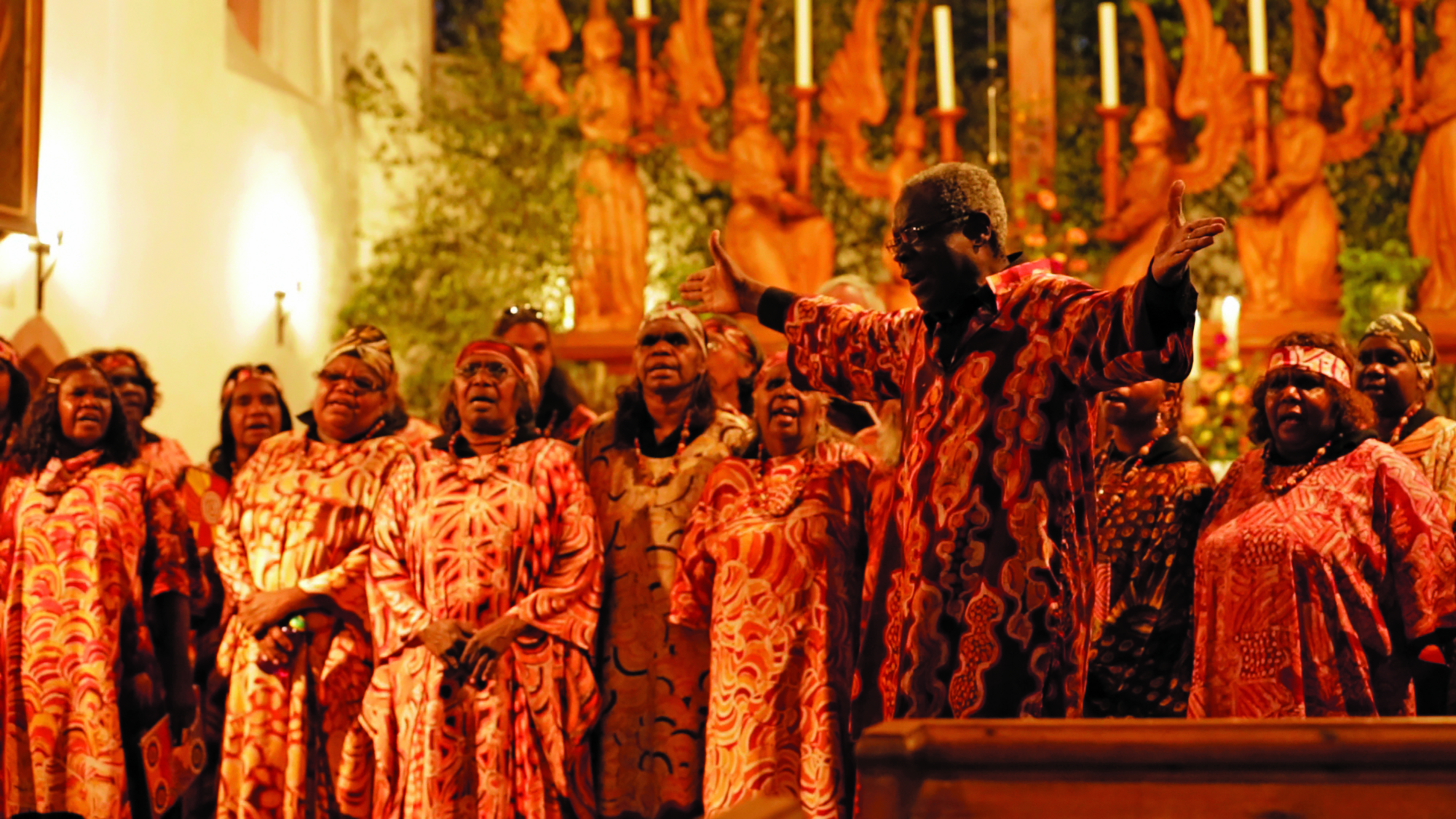I remember thinking – well, actually, wasn’t thinking; I felt. I felt just sheer joy. And I felt this weird sensation of bewilderment that no-one in this country knew about this choir. How is this possible?
I’m on the phone with documentary filmmaker and video installation/projection artist Naina Sen; she’s recounting the first Central Australian Aboriginal Women’s Choir rehearsal that she attended, in a small church in Alice Springs. While she was born in New Delhi, Sen has spent the last seven years working with Aboriginal people and communities, and, in turn, has ‘had access and privilege to hear some pretty extraordinary music’. The choir comprises an exceptional group of women from various remote communities in the desert region around Ntaria (Hermannsburg) – situated in the hills of the MacDonnell Ranges, 125 kilometres west of Alice Springs – who sing centuries-old Lutheran hymns in their own languages, namely Arrernte and Pitjantjatjara. They are the subjects of Sen’s feature-length documentary The Song Keepers (2017), which traces the fascinating history of the choral traditions of Central Australia’s desert communities and follows the choir on their tour of Germany with conductor Morris Stuart, returning the Lutheran hymns to their birthplace.
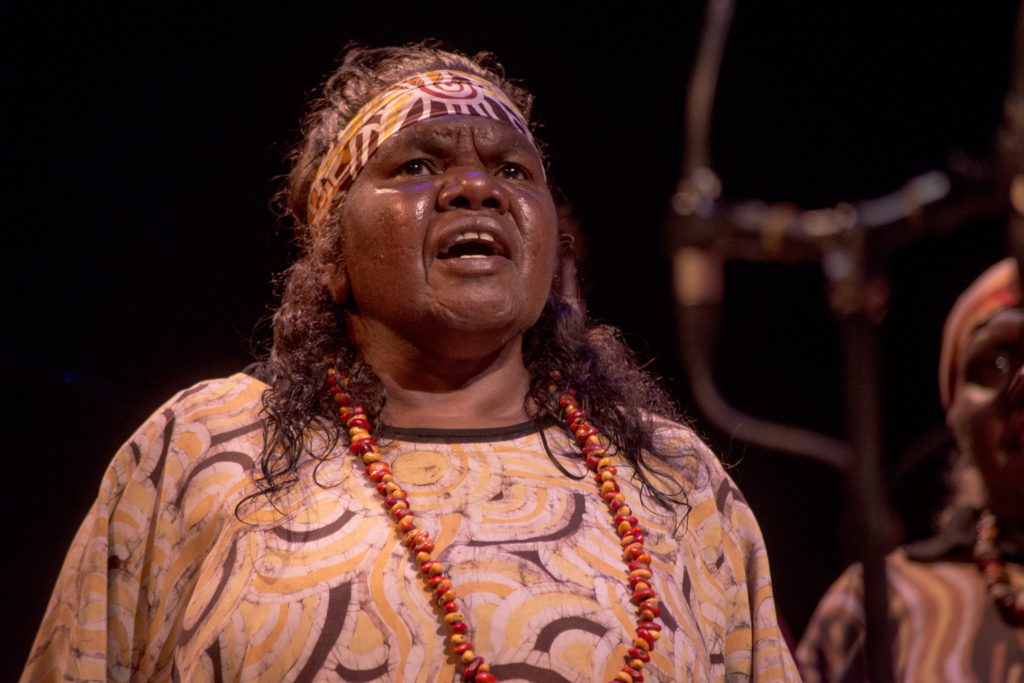
Perhaps ‘return’ is the wrong word, because it suggests the hymns are the same ones first brought to Hermannsburg during the early mission days in the late 1800s. These songs are markedly changed and unmistakably the choir’s own: not simply in terms of the language used to sing them, but also in the timbre and texture of the voices themselves, which speak to a complex and nuanced relationship between mission history and Indigenous communities. By extension, Sen’s film endeavours to address the choir’s relative obscurity and to make these stories known. During our interview, she emphasises this shift in authorship: ‘These hymns now represent cultural survival, they represent hope, they represent severe strength, and inspiration.’ This is not to say the hymns erase their Lutheran roots, but rather that they allow for what Sen describes as a ‘simultaneous contradiction’: they are both marked by their origins and textured by the experiences of the women and the songlines of their communities.
‘Songlines’, in the Aboriginal Dreaming framework, refer to the journeys across the land or sea made by creator beings. The knowledge of these Dreaming stories is passed on through paintings, dances and songs. Songlines often make note of distinctive natural landmarks and, in this way, allow for journeys to be mapped and navigated. They extend out across many language groups and incorporate a rich diversity of cultures, traditions and knowledge systems. The focus is less on the songlines’ actual words than on their rhythms and melodies. In Singing the Coast, Margaret Somerville and Tony Perkins argue:
Much as songlines do, The Song Keepers traces the journeys and stories of these women. As both an uncovering and an opening-out, the film provides a platform for these voices and calls on us to listen in.
Always sounding the landscape, Aboriginal and non-Aboriginal voices, song, music and text opened up a space for a different sort of writing […] In Aboriginal creation rituals, people and place are sung into being each time the ritual is performed. In the ritual performance of these stories the landforms and water, the plants and animals, are sung into being in particular places. Individual songs and story places are connected across the landscape through songlines. Singing the country is an essential part of nurturing country. Singing is knowledge.[1]Margaret Somerville & Tony Perkins, Singing the Coast, Aboriginal Studies Press, Canberra, 2010, p. 22.
Drawing on the central tenet that ‘[s]inging is knowledge’ – a means by which tradition, culture, language and history are communicated and passed on – I listen to Sen’s film as an extension of these networks of songlines that stretch out over time and space. In particular, I am interested in how these hymns may be heard as forms of rescripting and reclaiming. Much as songlines do, The Song Keepers traces the journeys and stories of these women. As both an uncovering and an opening-out, the film provides a platform for these voices and calls on us to listen in.
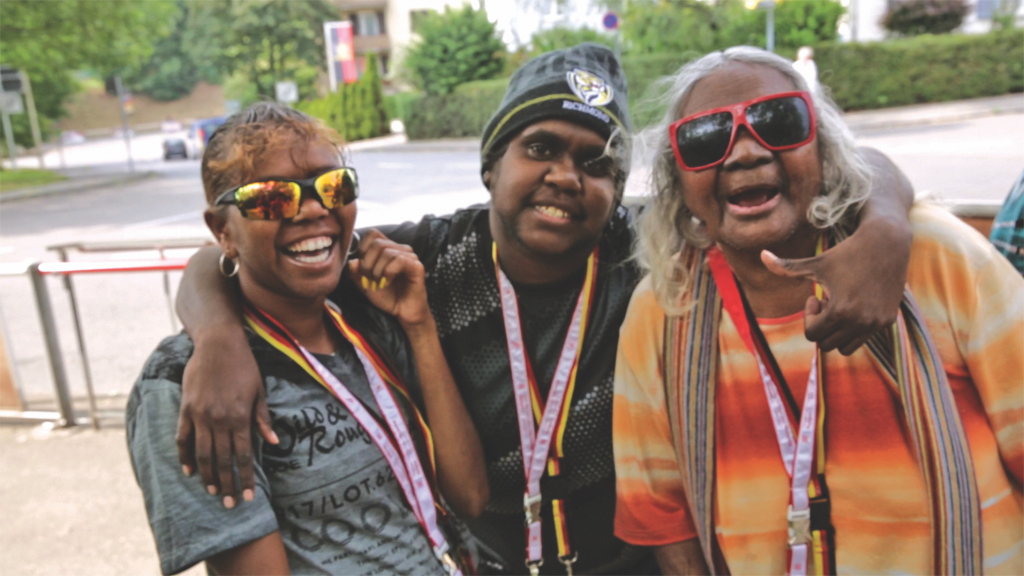
Film and music can, of course, work as powerful strategies against the erasure of history. This was particularly apparent at last year’s Melbourne International Film Festival (MIFF), where The Song Keepers had its world premiere. The 2017 festival placed a strong emphasis on Indigenous stories across a variety of genres, screening Tracey Moffatt’s classic horror anthology beDevil (1993); Victoria Wharfe McIntyre’s western short Miro (2016); several documentaries, including Sera Davies’ Namatjira Project (2017); and Amiel Courtin-Wilson’s beautiful hybrid documentary Bastardy (2008). Particular attention was paid to the role of music in Indigenous storytelling and to songwriting traditions. Ben Strunin’s Westwind: Djalu’s Legacy (2017), for instance – supported by the MIFF Premiere Fund and featuring an unlikely collaboration with singer/songwriter Gotye – is a stirring portrayal of Yolngu elder and yidaki (didjeridu) player Djalu Gurruwiwi’s efforts to protect his clan’s songlines. Strunin’s film was also accompanied by an immersive virtual-reality expansion entitled Hunt for the Yidaki (Ben Smith, 2017).
In fact, more broadly, there was a strong shift in how and where films were screened at MIFF 2017 – and this strategy worked particularly well to showcase impressive musical scores, such as those of psychedelic sci-fi Fantastic Planet (René Laloux, 1973) and experimental science films Clockwork Ocean (Ralph Heinsohn & Daniel Opitz, 2015) and The Man from the 9 Dimensions (Takashi Shimizu, 2016). In the case of The Song Keepers, its premiere included a Q&A with Sen and the film’s producers as well as a performance by the choir, who had flown down to Melbourne especially for the event. This was followed the next day by a ninety-minute concert held in association with the Melbourne Recital Centre.
Sen’s film quite literally gives voice to these hymns and stories. If songs allow these women to preserve and pass on their knowledge, culture and language, then The Song Keepers – and the filmmaking tradition more generally – is a valuable extension of this aim.
The affective potential of this coupling of music and cinema was brought to the fore at MIFF 2017’s closing-night gala. The Documentary of Dr G Yunupingu’s Life, Paul Williams’ highly anticipated film on the recently deceased Indigenous musician of the title, premiered across three different theatres, with each introduced by special guests including members of Yunupingu’s family as well as Mark Grose and Michael Hohnen from Skinnyfish Music. The passing of the internationally renowned figure – the most commercially successful Aboriginal artist to date[2]Trevor Marshallsea, ‘Dr G Yunupingu: An Exquisite Singer Who “Spoke to the Soul”’, BBC News, 26 July 2017, <http://www.bbc.com/news/world-australia-40725153>, accessed 23 October 2017. – highlighted the importance of acknowledging his work in the public sphere while also respecting Aboriginal mourning traditions, which prevent the depiction of deceased people. While Williams’ documentary was announced well before its subject’s death on 25 July, in the weeks following, it became unclear whether the festival would hold the screening. The decision to proceed was made after careful consultation with Yunupingu’s family and advice from senior Gumatj elder David Djunga Djunga Yunupingu. The festival then donated 10 per cent of the ticket revenue across the sold-out events to a fund supporting young Indigenous people living in remote communities.[3]Tom Clift, ‘MIFF Will Proceed with Closing Night Screening of Dr G Yunupingu Documentary’, Concrete Playground, 11 August 2017, <https://concreteplayground.com/melbourne/arts-entertainment/miff-will-proceed-with-dr-g-yunupingu-documentary/>, accessed 23 October 2017.
A beautiful elegy for a very private man, and a testament to the powerful bonds of his family and community, Williams’ film is a collaborative work, having been co-produced by Yunupingu himself. It provides fascinating insights into his early work with Skinnyfish Music, and follows the progression of his career and international tours. Sen herself toured with him for several years following the release in 2008 of his first solo album, Gurrumul, a complex and powerful debut that garnered widespread critical acclaim.[4]In 2008, the album won Best World Music Album and Best Independent Release at the ARIA Awards, and received three Deadly awards (the third naming Yunupingu as Artist of the Year); see Kathy McCabe, ‘Singer Dr G. Yunupingu Dies Aged 46’, News.com.au, 26 July 2017, <http://www.news.com.au/entertainment/music/singer-dr-g-yunupingu-dies-aged-46/news-story/7380ab55eccab1e7f90425a723f0928e>, accessed 26 October 2017. During the tour, Sen created and operated impressive visual projections that accompanied Yunupingu’s live performances, and she collected exclusive footage and interviews with his family for her short documentary Stories Through Song, released in 2010. Sen later worked as the associate producer and cinematographer for the ABC’s 2010 Australian Story profile on Yunupingu, ‘You’re the Voice’.[5]See ‘About’, Naina Sen official website, <http://nainasen.com.au/about/>, accessed 26 October 2017.
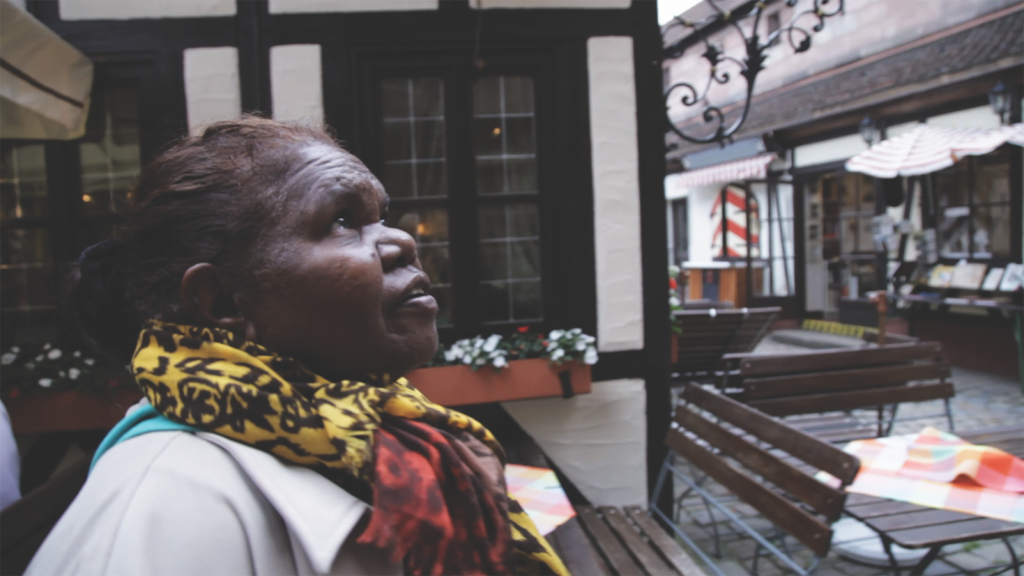
In a similar way, Williams’ documentary features many interviews with family members and musical collaborators, emphasising the networks of support and creative partnerships that underscored Yunupingu’s success. The significance of these networks is particularly apparent in the behind-the-scenes footage of his duet with Sting on the French music show Taratata in 2009. In the scene, Yunupingu has been asked to perform Sting’s hit ‘Every Breath You Take’ in the Gumatj language. However, he is unfamiliar with the song and there is little time to translate before they go to air. While everything does fall into place and the performance receives a standing ovation, this moment highlights the role that Grose and Hohnen played in the singer’s career, particularly in terms of negotiating deadlines and expectations for an extensive international touring schedule. The documentary also focuses on the cultural differences and miscommunications that occur when translating or translocating these songs and stories for the world stage.
Williams’ film offers an interesting comparison to Sen’s, in which reworked German baroque hymns are textured by the languages of the surrounding communities. In the same way that Sting’s lyrics are rescripted into and transformed by the Gumatj language used by Yunupingu, these hymns are shaped into songlines by the members of the Central Australian Aboriginal Women’s Choir. Sen’s film quite literally gives voice to these hymns and stories. If songs allow these women to preserve and pass on their knowledge, culture and language, then The Song Keepers – and the filmmaking tradition more generally – is a valuable extension of this aim. The films by Sen and Williams capture the multiplicity and complexity of these various histories and traditions, many of which have been silenced or slowly erased.
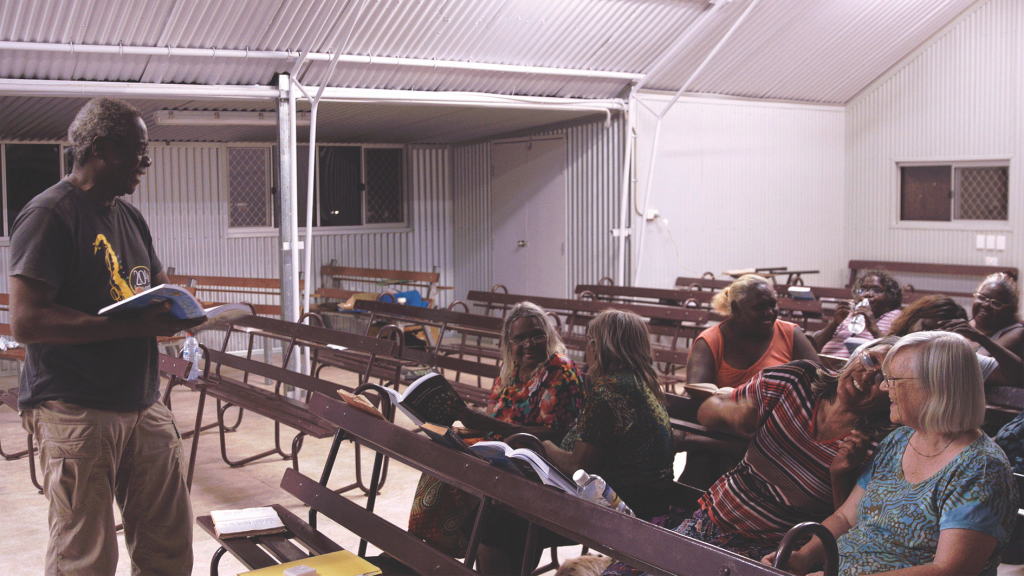
Hearing the women singing these hymns in Arrernte and Pitjantjatjara is an act of connection and a gesture towards understanding. The ethereal majesty of the hymns is anchored throughout the documentary by interviews with the women, who speak about their experiences on the missions and the role of the choir in preserving their cultures. Most of the interviews take place around Ntaria. The area was established as the Lutheran mission of Hermannsburg in 1877 and, while the land was not returned to Aboriginal people until 1982, the languages of the area were preserved during this time. This was, in part, owing to the missionaries’ efforts to communicate with the local people and willingness to learn their languages.[6]See ‘Hermannsburg Historic Precinct’, Australian Heritage Database, Department of the Environment and Heritage, 28 February 2006, <https://www.environment.gov.au/system/files/resources/efdfe304-47c3-4489-81b0-eb8658ce6f14/files/hermannsburg.pdf>, accessed 23 October 2017. Within only three years of arriving, they had translated fifty-three German hymns.[7]Karl Quinn, ‘MIFF 2017: The Song Keepers Is a Remarkable Tale of Culture Surviving and Thriving’, The Age, 5 August 2017, <www.theage.com.au/entertainment/movies/miff-2017-the-song-keepers-is-a-remarkable-tale-of-culture-surviving-and-thriving-20170804-gxpvol.html>, accessed 23 October 2017.
When Sen reflects on the history of the missions in these communities, she emphasises the centrality of language and music in opening up a dialogue between two very different cultures: ‘If you codify language, you preserve language. You preserve language, you inadvertently preserve culture.’ If the missionaries inadvertently preserved language and culture by translating Lutheran hymns for Aboriginal communities, then Sen’s film, in turn, continues this legacy by listening to these women, hearing their songs and sharing these performances and stories.
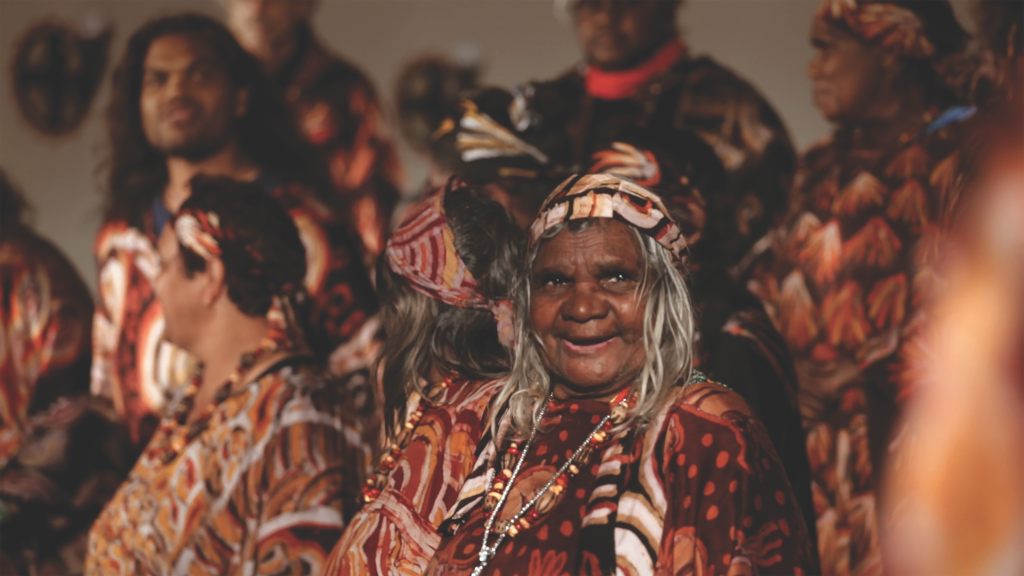
To ‘give voice’ to something is to provide it with a platform, to both listen in and allow it to project out. By recording these songs and anchoring them to narratives of experience, The Song Keepers takes back this unspoken past and transports these histories into the present: the women’s voices occupy space and time, echoing and resonating in the theatre spaces. There is indeed something truly magical about the harmony and timbre of the women’s vocals – the way the sound spreads out. French philosopher Jean-Luc Nancy posits that
to sound is to vibrate in itself or by itself: it is not only, for the sonorous body, to emit a sound, but it is also to stretch out, to carry itself and be resolved in vibrations that both return it to itself and place it outside itself.[8]Jean-Luc Nancy, Listening, trans. Charlotte Mandell, Fordham University Press, New York, 2007 [2002], p. 8.
Here, Nancy’s work emphasises the physicality and mobility of sound in spatial and tactile terms. He refers to a ‘sonorous present’ that ‘spreads through space, or rather […] opens a space that is its own, the very spreading out of its resonance, its expansion and its reverberation’.[9]ibid., p. 13. Sen’s documentation of the choir is a listening-in, a resonance, an opening-up.
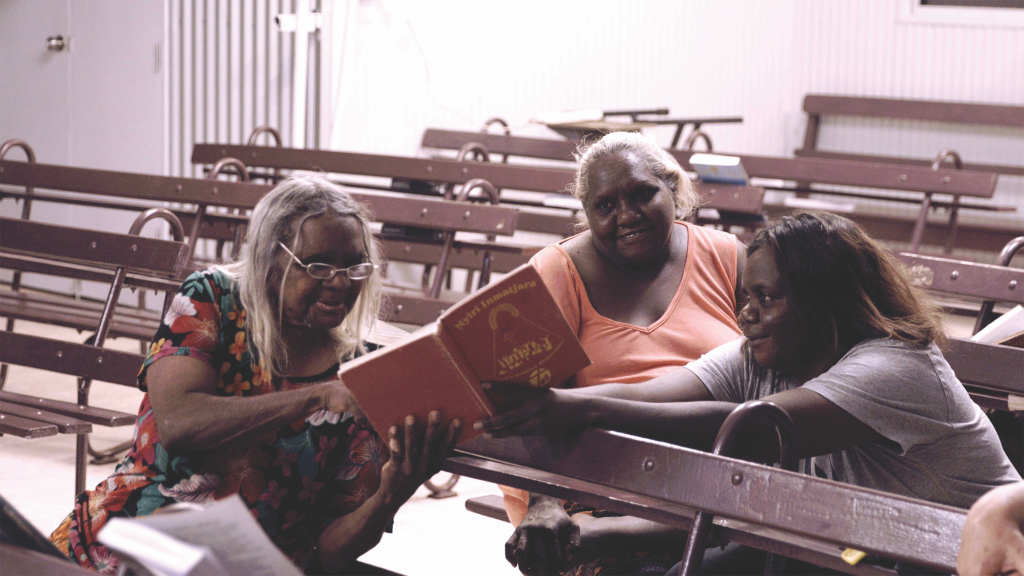
At the end of The Song Keepers, the choir reflect on their tour of Germany and one of the women, Janice, comments that they were ‘[t]reated better [there] than [they] are back home’. Her words point not only to Australia’s history of genocide, erasure and systemic abuse, but also to ongoing discrimination, racial inequality, incarceration rates and our failure to ‘close the gap’. Listening to these women sing and tell their stories is to hear the ‘contradiction’ that Sen has alluded to: a curious coexistence of two different cultures and traditions that are never quite made into one. The words and songs of the choir invite us to hear these experiences, this laughter, this pain, and to allow them to resonate with us. The hymns – and, by extension, Sen’s film – enable a process of remembering and reclaiming. They speak to diverse, layered histories that extend into the present.
Before I finish up my interview with Sen, she reminds me that this contradiction is ‘not resolved for you with a big bow at the end, because that’s not how it exists’. Indeed, these films, hymns and stories should never be ‘resolved’, but should – like the voices of the choir – continue to change, rise and fall, and reverberate outwards.
https://clickv.ie/w/metro/yunupingu
Endnotes
| 1 | Margaret Somerville & Tony Perkins, Singing the Coast, Aboriginal Studies Press, Canberra, 2010, p. 22. |
|---|---|
| 2 | Trevor Marshallsea, ‘Dr G Yunupingu: An Exquisite Singer Who “Spoke to the Soul”’, BBC News, 26 July 2017, <http://www.bbc.com/news/world-australia-40725153>, accessed 23 October 2017. |
| 3 | Tom Clift, ‘MIFF Will Proceed with Closing Night Screening of Dr G Yunupingu Documentary’, Concrete Playground, 11 August 2017, <https://concreteplayground.com/melbourne/arts-entertainment/miff-will-proceed-with-dr-g-yunupingu-documentary/>, accessed 23 October 2017. |
| 4 | In 2008, the album won Best World Music Album and Best Independent Release at the ARIA Awards, and received three Deadly awards (the third naming Yunupingu as Artist of the Year); see Kathy McCabe, ‘Singer Dr G. Yunupingu Dies Aged 46’, News.com.au, 26 July 2017, <http://www.news.com.au/entertainment/music/singer-dr-g-yunupingu-dies-aged-46/news-story/7380ab55eccab1e7f90425a723f0928e>, accessed 26 October 2017. |
| 5 | See ‘About’, Naina Sen official website, <http://nainasen.com.au/about/>, accessed 26 October 2017. |
| 6 | See ‘Hermannsburg Historic Precinct’, Australian Heritage Database, Department of the Environment and Heritage, 28 February 2006, <https://www.environment.gov.au/system/files/resources/efdfe304-47c3-4489-81b0-eb8658ce6f14/files/hermannsburg.pdf>, accessed 23 October 2017. |
| 7 | Karl Quinn, ‘MIFF 2017: The Song Keepers Is a Remarkable Tale of Culture Surviving and Thriving’, The Age, 5 August 2017, <www.theage.com.au/entertainment/movies/miff-2017-the-song-keepers-is-a-remarkable-tale-of-culture-surviving-and-thriving-20170804-gxpvol.html>, accessed 23 October 2017. |
| 8 | Jean-Luc Nancy, Listening, trans. Charlotte Mandell, Fordham University Press, New York, 2007 [2002], p. 8. |
| 9 | ibid., p. 13. |
